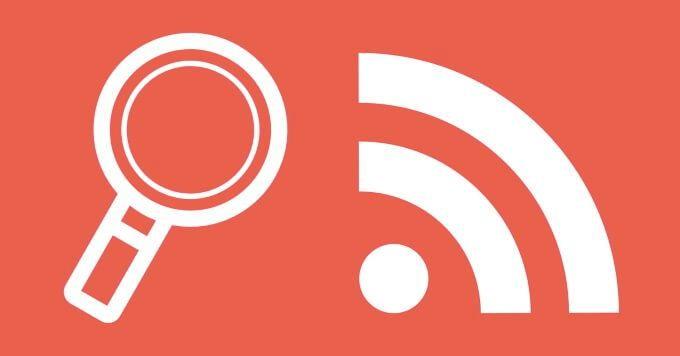Do you tend to spend a lot of your time online?
Are you a voracious reader of articles?
Are you dissatisfied with how you receive articles and find bookmarks to be tedious?
If you’re nodding your head to all three questions, then an RSS feed reader is the perfect reading companion for you! Hands down.
What is an RSS feed reader in the first place?
Even though we’re in a rising Renaissance for RSS, it’s not yet at the point it’s returned to the mainstream the way it was in the early 2000s. Back then RSS was the way to stay informed and follow multiple news sites, blogs and even forums.
In short, it’s a protocol for the syndication of content. Rather than go to a site to directly consume its content, the content travels to you. All this is done through an RSS feed reader. RSS readers – as you might have guessed already – read RSS feeds, which are scripted in XML files in a site’s source code, and deliver any newly published post to the reader.
How does it work?
You already know how to use RSS readers, because RSS is the granddaddy of the modern feed. Hop on Twitter, follow an account and you receive their tweets along with everyone else’s. Or seeing new videos of your favorite creators in your YouTube subscriptions. It’s the very same principle. All of social media is indebted to RSS.
But with RSS, users have to find the RSS feed in order to subscribe to it. This can be tricky to do on your own, but some RSS readers make the subscription truly effortless. Inoreader has designed a browser extension, which detects RSS feeds (if any) on a site and can subscribe you then and there. Even better, posts are ordered by publication time from newest to oldest.
How to effectively use it?
Choose the topics you care about
What I’ve personally come to appreciate most about RSS is that it shrinks the information pool I consume on a daily basis. Because you add whatever appeals to you in your subscriptions, you’re spared the constant barrage of distractions. I usually log onto social media with a specific purpose (same for my top sites), which I promptly forget as soon as I scroll for five seconds. There are ads, pictures of friends, videos, memes and carefully positioned posts that would encourage me to just spend time there even if the content I consume is not of particular value to me.
That’s why RSS has done me so good. I’m in control of what I read. Modern RSS feed readers even help you with discovery along the way. Inoreader has been a good fit for me, because of its content discovery. You can browse topics that interest you, which are organized in a neat way from general to more specific topics.
Discover other popular feeds
With the Internet being as vast as it is, it’s not a big stretch to assume there’s a lot of writers and sites whose works you don’t get access to. You discover any new content based on what your friends share on social media or what you manage to find using your best google search skills (I’m not quite as powerful to win against good SEO and the algorithms that seem to know better).
Through Inoreader I’ve found popular feeds in each topic category. The way Inoreader ranks feeds per topic is based on user subscriptions. The more subscriptions a site has, the higher it ranks. The benefits are two-fold. Not only do I find out unknown-to-me content, but I also know that other people vouch for it that it’s of quality and trustworthy.
Discover popular collections
Sometimes you don’t want to scroll through a long list of popular feeds. Sometimes you want to have access to pre-selected feeds on a specific area of interest. That’s a situation where Inoreader can also assist. You see in the discovery zone there’s a special section for collections, which are curated and shared by actual users. One of the most popular collections on the reader has collected all feeds pertaining to Google products in one place.
That’s the kind of versatility collections add to your RSS experience.
Create your own collection
The curation never stops with RSS readers. The best way to experience your subscriptions is via internally organizing them into your own folders based on interests – maybe that’s going to be film reviews, writers’ residences, tutorials, sports teams. It doesn’t matter. You can put in folders, tag, star and mark articles as important. This varies from reader to reader as each brings its own flavor to how it allows you to organize your subscriptions further.
Inoreader takes this a step further and says ‘if you like it, you can share it.’ You can turn your own personal folders of subscriptions publicly accessible and generate a custom RSS feed URL for your entire folder.
RSS might have been built to handle blogs, newsletters and news sites, but readers are now capable of syndicating content from everything. This can be text-based such as Reddit and job postings on job sites to media-rich sources like YouTube, podcasts, Twitter and Instagram. You can follow as many influencers and personalities online without going through the trouble of staying on social media. Why would you need to?
Imagine that you’re waiting for a very specific announcement from a company on a limited edition sale or an event, which is bound to sell out within a day. You can hang around your social feeds, but that’s not particularly effective. Why refresh, when you can receive the new post in your main feed as soon as it’s published. And it won’t get lost in the non-chronological feed. Even better – you can set alerts when it does pop up so you don’t miss it.
